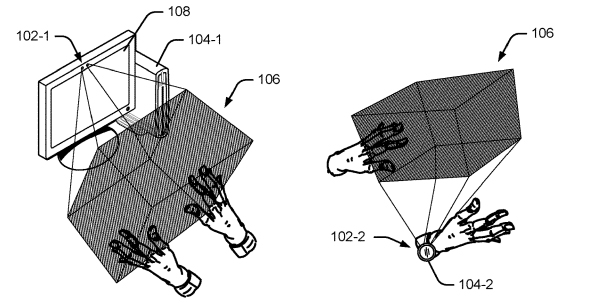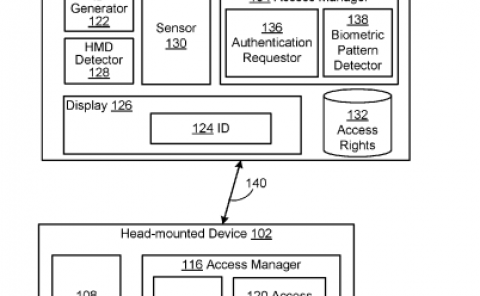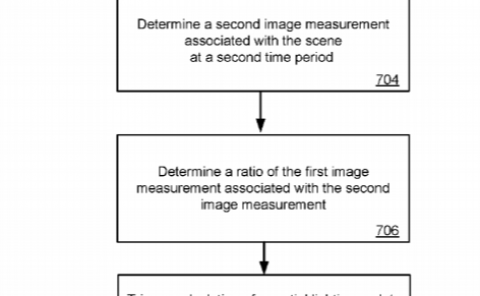Google Patent | Wide-Field Radar-Based Gesture Recognition
Patent: Wide-Field Radar-Based Gesture Recognition
Publication Number: 20190033981
Publication Date: 2019-01-31
Applicants: Google

Abstract
This document describes techniques using, and devices embodying, wide-field radar-based gesture recognition. These techniques and devices can enable a great breadth of gestures and uses for those gestures, such as gestures to use, control, and interact with computing and non-computing devices, from software applications to refrigerators.
Background
Small-screen computing devices continue to proliferate, such as smartphones and computing bracelets, rings, and watches. Like many computing devices, these small-screen devices often use virtual keyboards to interact with users. On these small screens, however, many people find interacting through virtual keyboards to be difficult, as they often result in slow and inaccurate inputs. This frustrates users and limits the applicability of small-screen computing devices. This problem has been addressed in part through screen-based gesture recognition techniques. These screen-based gestures, however, still struggle from substantial usability issues due to the size of these screens.
To address this problem, optical finger- and hand-tracking techniques have been developed, which enable gesture tracking not made on the screen. These optical techniques, however, have been large, costly, or inaccurate thereby limiting their usefulness in addressing usability issues with small-screen computing devices.
One other manner has recently been developed where gestures are tracked using radar. Current radar techniques, however, often require a large antenna array and suffer from numerous practical difficulties. These large antenna arrays use thin-beam scanning techniques to locate a large number of points in space, including points of a human action (e.g., fingers, arm, or hand). These techniques track these points of a human action and the other points in space and then determine which points are associated with the human action and which are not. With these action points determined, the techniques track their movement and, based on these movements of the points of the action, reconstruct the action throughout the movement. With this reconstructed movement, the techniques then determine a gesture associated with those movements. This permits some rudimentary gesture recognition but is limited by the large antenna array and the computational difficulties and resource requirements inherent in using thin-beam scanning techniques.
Summary
This document describes techniques and devices for wide-field radar-based gesture recognition. These techniques and devices can accurately recognize gestures that are made in three dimensions, such as non-screen or “in-the-air” gestures. These in-the-air gestures can be made from varying distances, such as from a person sitting on a couch to control a television, a person standing in a kitchen to control an oven or refrigerator, or centimeters from a computing watch’s small-screen display.
This summary is provided to introduce simplified concepts concerning wide-field radar-based gesture recognition, which is further described below in the Detailed Description. This summary is not intended to identify essential features of the claimed subject matter, nor is it intended for use in determining the scope of the claimed subject matter.



